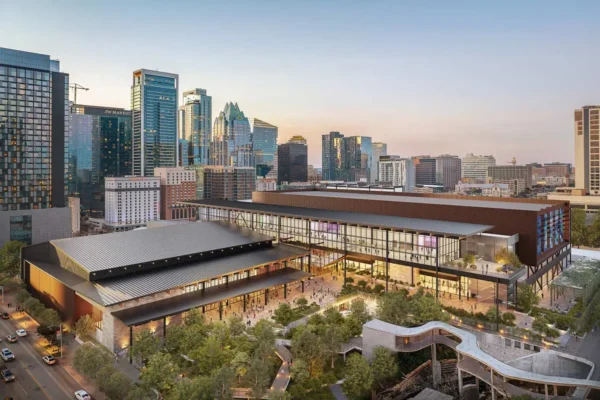In the end, visitors want to see you, feel you and even smell you before doing business. So there is no harm at all. Because we can have access to information beforehand, we even have better visitors because they are better prepared when they come to the show.
But Wi-Fi, 3G and 4G have brought a whole new danger. We text message, WhatsApp, Skype, LinkedIn and Facebook all the time. The way we communicate with each other is changing dramatically. We want peer-to-peer contact within one minute of time. In fact, email is becoming something like the fax machine was a few years ago. Soon-to-be old fashioned.
Now there is a great contradiction here because this endless need for information and contact might lead to more real personal contact, and that seems not to be the case. The younger generation (I am pushing 50, but look a lot younger) stays glued to their machines and are not interested in real life contact.
Go into a bar and you will see 90 percent of the people touching their smartphone every two minutes. I have seen guys asking a girl to dance through Facebook and Twitter. This prevented them the good old slam in the face when the lady was not up for it. At least that happens in the Netherlands where we do have a lot of girl power.
Trend no. 2: No goals, no glory
Back to tradeshows and events. When I entered this market in the beginning of the ‘90s, and my old boss was explaining me how things worked, I was already struck by the fact that hardly anyone was engaging with visitors at tradeshows. Big stands, small stands, big budgets, small budgets…..no real interaction with a few exceptions. He said to me all the people who go to events and tradeshows have a certain goal and most of the time it is to increase sales. They will tell you otherwise, but that is untrue. They will come up with stories like increasing our name recognition by just being there. We want to sustain our relation and more stuff like that.
Even worse things happened because people were pulling out of tradeshows. They claimed the costs were too high and there was no real benefit from it. You cannot measure it, they claimed. Untrue, because it is one of the most transparent ways of communicating.
People could do two things that make it better.
- Define simple goals. #new contacts, #customers seen @the show, #demo’s given, #free publicity articles, #people who react positively to your proposition.
- Register all your onsite actions in order to be able to evaluate your show.
Trend no. 3: Shorter stays at shows
In Europe, people do not take the old fashioned two days to visit a tradeshow. Their time is limited, and so, they are in a sort of hurry. Or their bosses let them go for just one day. This means that the day must be worth something. They must be able to tell a story when they arrive back at the office. This asks a few things from exhibitors. Enable the visitors to pre-inform themselves and aim for real appointments at the show. Do not lean back and expect people to drop by occasionally.
Trend no. 4: More specialized events
In line with the peer-to-peer communication development, we see an uprise of more specialized events. Visitors do not want to search for that one solution within a big event, but want to be sure that they will find what they need fast. So we see organizers creating small events for a very dedicated public – high level and very efficient for both visitors and exhibitors.
Trend no. 5: Visitors get older
To be honest, that is becoming a real threat for our industry. In Europe, we have calculated that the average age of the visitors is climbing by one each year. People under 40 are really less interested in events and tradeshows as a way to gather information. They seek other ways to do that. The big reason is that, in their eyes, we are maintaining a very old fashioned and inefficient vehicle here. And we have not found our response yet. It does interconnect with trend no. 6 where we see that people need more experience and thrills.
Trend no. 6: Less info, more experience
When I visited a theme park in Europe for the first time, I was thrilled and nervous for days because of the big event. Now my children get bored in Disneyland Paris after half a day. Been there and seen that. We have so many impulses and kicks in normal life that we have to provide a special experience to attract people. This also goes for events and tradeshows or for the individual participations. A “normal” stand is not enough any more. But walking through international fairs, I see a large gap between the real needs of the visitors and the way exhibitors thinks is the right way. Every contact moment should amaze, thrill and connect to the heart and soul of the visitor. He must be placed in a state where he becomes receptive of your information.
Trend no. 7: Branding is a rising star
What kind of feeling do you get when you see a well-known brand? Nike, Apple or Starbucks? What do these brands stand for? How pre-occupied are you against them? Loads of money is spent on marketing, but also on training people. People are the brand and their behavior is crucial. How do they apply the brand values? It is a thing that is concurring in Europe called internal branding. The brand values are leading in all the actions a company takes. So when it comes to tradeshows and events, it is the same thing here. I must recognize the brand in everything. The look and feel and the way I am treated at the stand.
Trend no. 8: Personal contact is still the best way to earn trust
Having said all this, we still have an amazing power over all other ways of communicating. We offer the personal hand, the feel, even the smell. We offer the best way to earn trust by offering the opportunity to look right into the eyes of the visitor. This will build or destroy trust, but it is still the most pure form of communication. Every day I am lucky and thankful to be working in this industry.






























